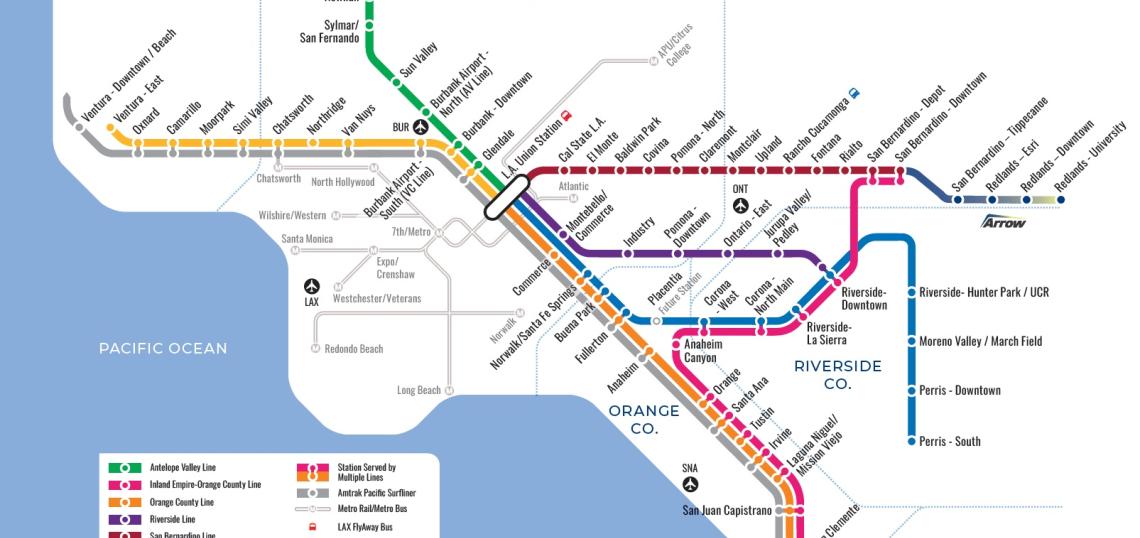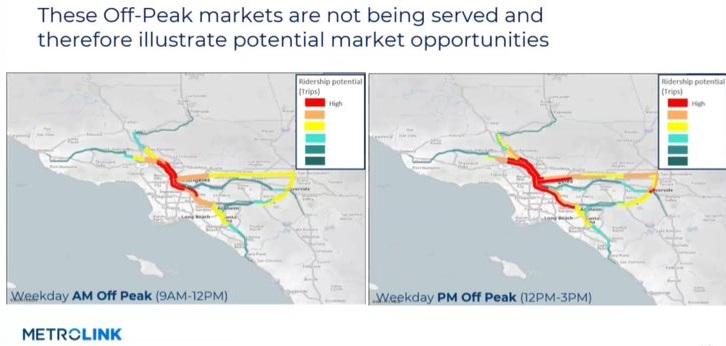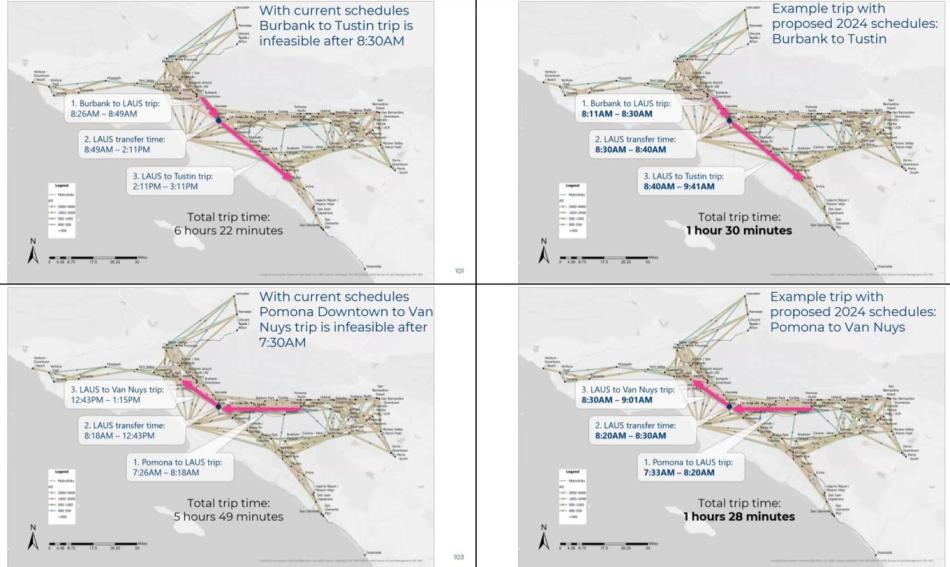In the coming years, Metrolink is aiming to spend up to $10 billion on capital improvements to its nearly 550-mile regional rail network in a bid to improve passenger service. But in the short term, service changes under consideration by the agency's Board of Directors could be a boost to ridership without laying a single mile of new track.
A staff presentation describes Metrolink's historic scheduling process as a "smorgasbord approach," shaped by physical capacity, staffing, and requests by customers and member agencies, among other factors. However, last year the agency tasked a team of consultants to perform a market analysis and design a new schedule, with the goal of improving efficiency and growing ridership.
Per the presentation, that analysis found high potential for ridership growth within Metrolink's inner zone - including segments of the Antelope Valley, Ventura County, Orange County, and San Bernardino Lines. The study sites StreetLight Data suggesting an opportunity for improving ridership by adjusting schedules to provide greater service at off-peak hours. And since 20 percent of potential trips currently require a connection at Union Station, the study recommended improving transfer opportunities between lines.
The presentation highlights a hypothetical trip at 8:30 am between Burbank and Tustin, which is currently infeasible. While the voyage between Burbank and Union Station takes less than 25 minutes, no Metrolink trains depart on the one-hour trip to Tustin until 2:11 pm. That would mean a total trip time of 6 hours and 22 minutes. The proposed schedule adjustments aim to address that shortcoming by shortening the transfer window to just 10 minutes. That would mean an end-to-end trip between Burbank and Tustin in 1 hour and 30 minutes.
Similarly, a hypothetical trip between Pomona and Van Nuys would take 5 hours and 49 minutes, due to the inability to transfer from the San Bernardino Line to the Ventura County Line between 8:18 am and 12:43 pm. The proposed schedule adjustments would once again enable a transfer within 10 minutes, cutting the end-to-end voyage down to 1 hours and 28 minutes.
Timing schedules to better coordinate transfers is a common strategy in transit planning, also known as "pulse scheduling." Here's how Alon Levy described pulse scheduling for us back in 2017:
"In a pulse, several transit vehicles converge at one point, such as one bus transfer point in a small city, or a train station in a larger one, at a fixed interval, typically once an hour on buses. This means that transit is scheduled to arrive at the transfer point, called the pulse point, a few minutes before the hour, every hour, and to leave just after the hour, allowing people to transfer between any two routes with little wait time. On buses, it is difficult to maintain frequent pulse schedules, but on trains, separated from road traffic, it is easy."
Updated schedules call for either reducing or maintaining the current number of train sets running on each of Metrolink's seven rail lines, while simultaneously running more service miles with more stops and trips. That would in turn create four times as many transfer opportunities within a 10-to-20-minute window as exist under current operations.
This change would come as Metrolink struggles to regain ridership which evaporated during the pandemic. With just over 19,000 passengers on 142 weekday trips, the system moves less than half the 40,000 riders it saw on weekdays prior to the pandemic. The revised scheduled would help ridership move closer to that earlier number - projections estimate up to 26,500 passengers on 178 daily trips.
Those changes would come at a cost - roughly $14.1 million more than Metrolink's operating budget projected for the coming fiscal year.
Follow us on social media:
Twitter / Facebook / LinkedIn / Threads / Instagram
- Metrolink (Urbanize LA)









